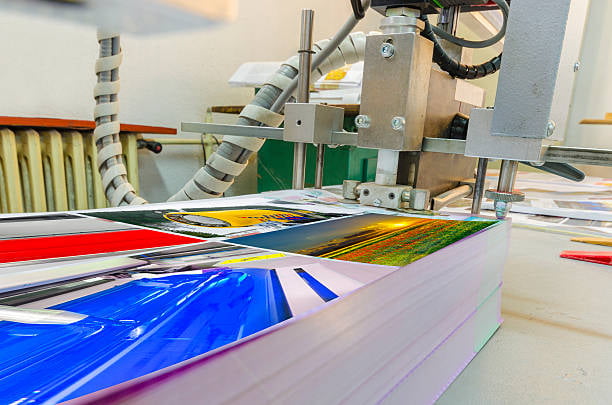Despite the fact that there are many other printing techniques, offset lithography—also known as offset printing—is used to create the majority of ink-on-paper printing jobs. Web presses or sheet-fed presses are the two types of printing presses that produce offset printing.
Describe Offset Printing
In offset printing, the image that will be printed on each individual sheet of paper is placed on a printing plate formed of thin metal. Only the image retains the ink when ink and water are added to the plate. The metal plate's image is transferred to a rubber blanket, which then transfers it to the paper. Metal plates are required for each color of ink.
LEARN MORE: offset printing
Unlike web presses, which print on continuous rolls of paper, sheet-fed presses print on individual sheets of paper. Different sizes of sheet-fed presses are available.
most economical printing presses, especially for big runs, are sheetfed offset presses. Additionally, it's perfect when you require huge numbers or versatile color, paper, and sizing options.
Paper sheets are fed into the printing press for sheetfed offset printing before being printed on. A "perfector cylinder," found in some sheetfed presses, allows the pressman to flip the paper sheet so that both sides can be printed on in a single pass.
Between 4,000 and 18,000 sheets can be printed per hour on sheetfed presses. With the exception of some forms of packaging and long runs of magazine publications, the printed products it creates are vast and encompass the majority of printed things.
Three size categories for presses are possible. The first prints on paper up to 14 × 17 inches and is referred to as "small offset." Company cards, stationery, flyers, and short-run business forms are among the items produced by these presses, which are used by several instant printers and small local printers.
Presses that can print on sheets of paper up to 25 x 38 inches are under the second group. For printing brochures and medium runs (5,000–20,000) of general color work, medium to large commercial printers uses the majority, which prints in two or more colors.
The largest sheetfed press in the last group can print on papers up to 49 x 74 inches or bigger. These presses are frequently used for printing color work in large numbers (up to 100,000).
Sheetfed offset printing may produce printed goods of excellent quality on a variety of light and heavy-weight substrates. Variations in the proportion of the ink and water are frequent sources of color change. Web offset printing typically produces images with better overall picture quality and sheet-to-sheet registration. For altering color and registration, modern sheetfed presses have sophisticated electronic controls. In a market where prices are competitive, this technology will frequently cut down on setup time (makeready) and print waste, leading to an affordable end product.
Coated and uncoated paper as well as cardstock are printed using sheet-fed presses. Large sheetfed presses may contain six or more print units that each print a different color of ink on the sheet of paper in one pass of the press, yet the press may only have one unit that can print one color at a time.
When ought one to use it?
The best choice for small to medium print tasks. On projects of this size, the majority of professional printers don't even offer web printing. The following sheet-fed print jobs are typical:
- Letterhead
- Business Cards
- Stationery
- Flyers
- Brochures
Although sheet-fed machines are slower than web printing presses, they are easier to set up, don't require as much labor, and won't put a stop to your job if a problem arises.
Web printing presses have more functionality, but they also weigh more, cost more, are noisier, and use more electricity. The entire printing effort will be put on hold if something goes wrong in any one of the steps. If the cutter or folder of a sheet-fed printer malfunction, your print job will still go through uninterrupted. The final result is that sheet-fed printers are the most effective when your project requires great quality and prompt completion.
What Advantages Are There?
You have more possibilities with sheet-fed printing, and the results are of the greatest quality. The advantages comprise:
- Varnish - Matte, Dull, and Gloss
- Overall, aqueous is glossy, matte, dull, and soft.
- Spot, Matte, Dull, Textured, and Overall Gloss, UV-Touch
- Offer a greater degree of freedom
- Up to 15,000 impressions can be printed each hour
With all these wonderful advantages, this is the approach to a superb end result. Additionally, sheet-fed printing results in less waste and setup time.
Using Printing for a Future Project
Sheet-fed printing is the best option for you if your print job requires superior quality rather than quantity.
Now that you are aware of its importance, request a quote from HUIDA Offset Printing for the best goods and services to fulfill all of your printing requirements for your upcoming project!

